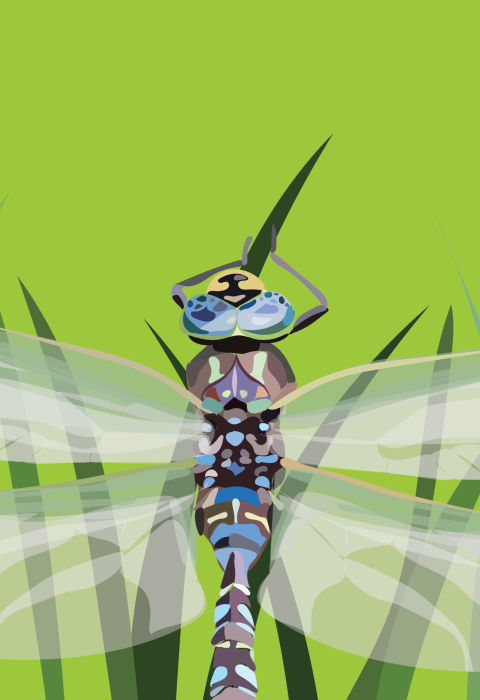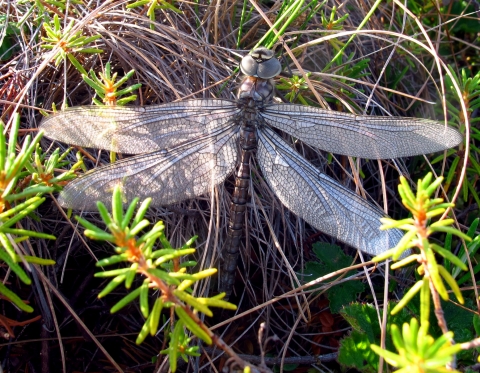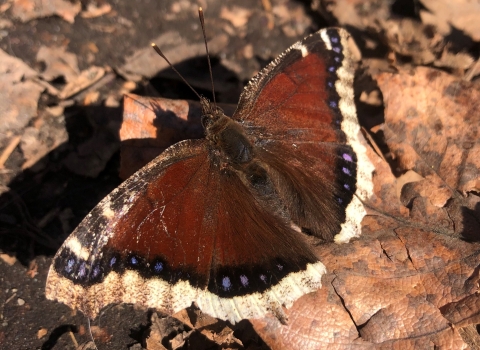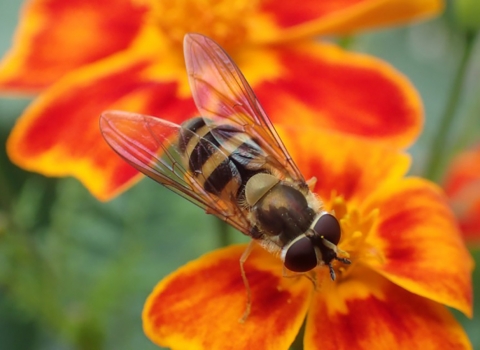“Today I saw the dragonfly…He dried his wings: like gauze they grew; Thro’ crofts and pastures wet with dew. A living flash of light he flew!”—The Dragonfly, by Alfred Lord Tennyson
There are roughly 35 dragonfly species known to occur in Alaska. They range in size from tiny metallic-green sedge sprites to the five-inch-long lake darner. With 26 species documented to date, one of the top areas for dragonfly diversity in Alaska is Kanuti National Wildlife Refuge.
Dragonfly Basics
Aquatic nymph to aerial hunter
Dragonflies spend most of their lives under water as larvae where they predate on aquatic insects—and occasionally even small fish. Some species spend years in this aquatic larval form before they climb out and metamorphose into adults. If you’re familiar with the cicadas of the eastern United States, this lengthy larval stage may sound vaguely similar.
Adult dragonflies only live a month or two as the aerial hunters we see in summer. During Alaska’s short, but sweet summer, you’ll see the males feeding in meadows and along roadsides, and roving the shorelines and sedges to find mates. Females are more secretive and won’t go near water until they’re ready to mate.
Dragonflies v. Damselflies
Dragonflies (suborder Epiprocta) are usually larger, with eyes together and wings up or out at rest. Damselflies (suborder Zygoptera) are usually smaller with eyes placed apart and wings along their body at rest.
Dragonflies in the Far North
Alaska’s official state insect is a dragonfly!During the 1993–1994 school year, students from across Alaska cast their vote for the four-spotted skimmer. One Aniak student commented, “Dragonflies eat mosquitoes, one of the state’s most annoying pests!”
Alaska’s major groups include the Skimmers (whitefaces and king skimmers), Darners, Emeralds, Narrow-winged Damselflies (bluets) and Spreadwing Damselflies. The common green darner and spot winged glider are only occasional visitors and the Pacific spiketail record hasn’t been confirmed since the 1800s.
Discoveries and Dragonfly Day Celebrations
In 2004, U.S. Fish and Wildlife Service wildlife biologist Lisa Saperstein set out to better inventory insects in Kanuti Refuge. Having heard of the Dragonflies of Alaska field guide, Lisa sent several dragonfly specimens to one of the authors, John Hudson, to have them identified. John came across a species of damselfly among those in the sample that was different from any he had seen before in Alaska. It was a prairie bluet, a species not seen before in the state. The find prompted a closer look at dragonfly diversity in the refuge.
After several dragonfly collecting trips, Kanuti Refuge now holds the state record for the most dragonfly species of any area. Kanuti Refuge owes its rich dragonfly diversity to the abundant and diverse wetlands within the refuge.
“Dragonflies are fun to catch and you can look at them and set them free without injuring them.”— Lisa Saperstein, Wildlife Biologist
In Alaska we are shared stewards of world-renowned natural resources and our nation’s last true wild places. Our hope is that each generation has the opportunity to live with, live from, discover and enjoy the wildness of this awe-inspiring land and the people who love and depend on it.











